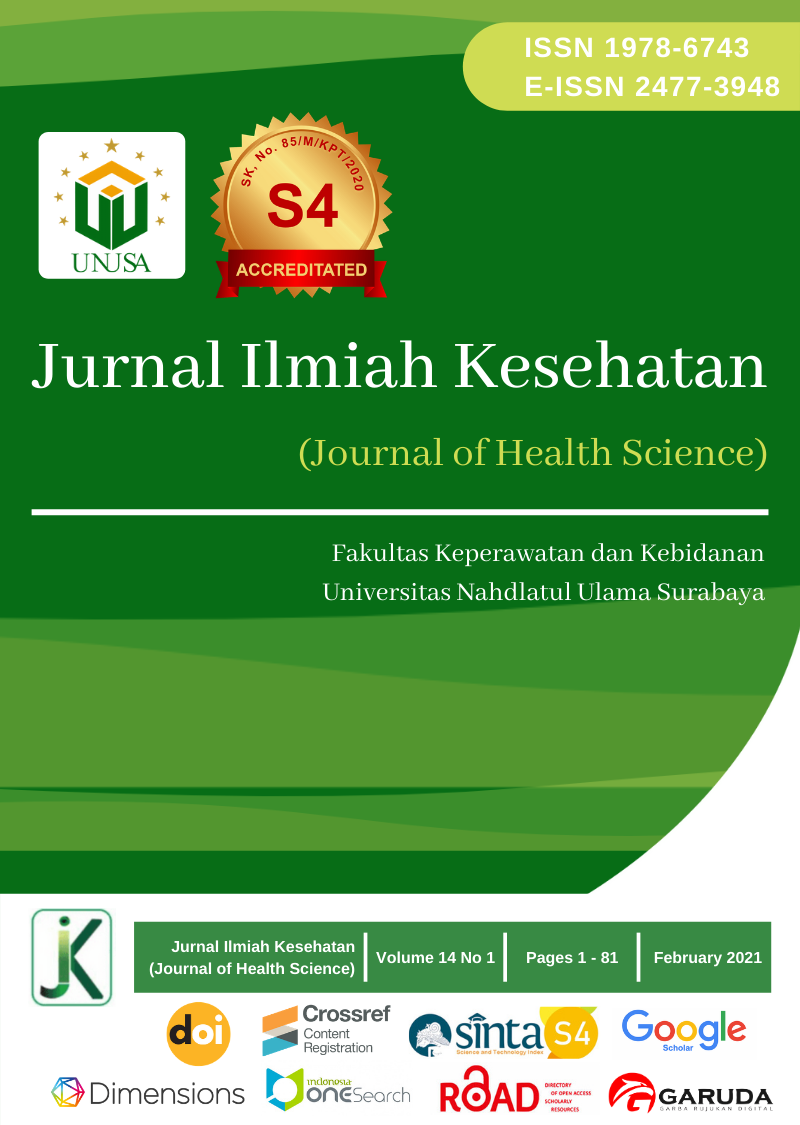Effect Of Water Clover (Marsilea Crenata) Leaf Extract On Estrogen Receptors-Β In Skin Aging
Main Article Content
Abstract
Extrinsic and intrinsic factors influence skin aging. Hormonal changes, especially estrogen, significantly affect intrinsic skin aging. Decreased circulating estrogen levels reduce skin collagen content and skin elasticity. Isoflavones in Marsilea crenata (MC) leaf are active substances containing compounds that mimic estrogen. This study aims to analyze MC leaf extract against the estrogen receptor (ER)-β. The sample for this research was female Wistar Rats (Rattus norwegicus). All of them were 12 months old, with their weight was between 350 to 550 grams divided into five groups. P1 P2 and P3 were grouping with MC leaf extract administration in sequential doses 20 mg/kg BW, 30 mg/kg BW, and 40 mg/kg BW. At the same time, P4 was a positive control group, and P5 was a negative control group. The independent variable was M.crenata leaf extract. The dependent variables were (ER)-β expression and dermal thickness. The data analysis utilized the one-way analysis of variance (ANOVA) showed significant differences (p< 0.05). Each group showed significant results, and group P2 showed the highest expression of (ER)-β and dermal thickness. The result showed that there were significant correlations between both variables (P<0.05). This research has proved that water clover extract could become an alternative treatment in the future for skin aging. However, further research should find a proper dose for human consumption.
Downloads
Article Details
Copyright (c) 2021 winawati eka putri wina, maria ulfa maria

This work is licensed under a Creative Commons Attribution-ShareAlike 4.0 International License.
References
Akyun, I. K., Fajariyah, S. and Mahriani, M. (2019) ‘Efek ekstrak etanol kedelai hitam (Glycine soja) terhadap ketebalan dermis mencit (Mus musculus L.) pasca unilateral ovariektomi’, Jurnal Biologi Udayana, 23(2), p. 80. doi: 10.24843/jbiounud.2019.v23.i02.p05.
Alam, M. and Havey, J. (2010) 'Photoaging', in Draelos, Z. (ed.) Cosmetic Dermatology: Products and Procedures. Wiley Online Library, pp. 13–21.
Assaf, H., Adly, M. and Hussein, M. (2010) 'Aging and Intrinsic Aging: Pathogenesis and Manifestations', in Farage, M., Miler, K., and Maibach, H. (eds) Textbook of Aging Skin. Berlin: Springer.
Baumann, L., Saghari, S. and Weisberg, E. (2009) Cosmetic Dermatology. Principles and Practice 2nd Ed. The McGraw-Hill Companies, Inc. doi: 10.1111/j.1473-2130.2004.00038.x.
Carneiro, J. et al. (2020) 'The Effects of estrogens and phytoestrogens on human skin and its topical use for prevention of skin aging-Literature review', Surg Cosmet Dermatol, 12, pp. 11–5.
Chung, J., Cho, S. and Kang, S. (2004) 'Why Does the Skin Age? Intrinsic Aging, Photoaging, and Their Pathophysiology', in Rigel, D. et al. (eds). New York: Marcel Dekker, Inc.
Garg, C., Khurana, P. and Garg, M. (2017) 'Molecular mechanisms of skin photoaging and plant inhibitors', International Journal of Green Pharmacy (IJGP), 11(02), pp. 217–232.
Kapuscinska, A., Nowak, I. and Mickiewicz, A. (2015) 'The use of phytoestrogens in anti-ageing cosmetics', CHEMIK, 69(3), pp. 154–159.
Kavitha, O. and Thampan, R. V. (2008) 'Factors influencing collagen biosynthesis', Journal of Cellular Biochemistry, 104(4), pp. 1150–1160. doi: 10.1002/jcb.21728.
Kementerian Kesehatan RI (2017) Analisis Lansia di Indonesia. Jakarta: s.n.
Kohl, E. et al. (2011) 'Skin Ageing', JEADV, 25, pp. 873–884.
Laswati, H. et al. (2016) 'Tomato (Lycopersicum commune) Juice and Physical Exercise Increase Number of Neurons and ERβ expression in Post-Ovariectomy Rats Brain', Bali Medical Journal, 5(3), p. 84. doi: 10.15562/bmj.v5i3.309.
Laure, R. et al. (2008) 'Induction of collagen by estradiol: difference between sun-protected and photodamaged human skin in vivo', Arch Dermatol, 144(9), pp. 1129–1140.
Liu, T. et al. (2019) 'Recent advances in the anti-aging effects of phytoestrogens on collagen, water content, and oxidative stress', Phytotherapy Research, 34(3), pp. 435–447. doi: 10.1002/ptr.6538.
Mahmoud, A. M. et al. (2015) 'Genistein increases estrogen receptor beta expression in prostate cancer via reducing its promoter methylation', Journal of Steroid Biochemistry and Molecular Biology. Elsevier Ltd, 152, pp. 62–75. doi: 10.1016/j.jsbmb.2015.04.018.
Markiewicz, M. et al. (2013) 'A role for estrogen receptor alpha (ERα) and estrogen receptor beta (ERβ) in collagen biosynthesis in mouse skin', J Invest Dermatol, 133(1), pp. 120–127.
Mizukoshi, K. et al. (2015)' Changes in dermal papilla structures due to aging in the facial cheek region', Skin Research and Technology, 21(2), pp. 224–231. doi: 10.1111/srt.12180.
Moraes, A. B. et al. (2009) 'The effects of topical isoflavones on postmenopausal skin: Double-blind and randomized clinical trial of efficacy', European Journal of Obstetrics and Gynecology and Reproductive Biology, 146(2), pp. 188–192. doi: 10.1016/j.ejogrb.2009.04.007.
Pilsakova, L., Riecansky, I. and Jagla, F. (2010) 'The Physiological Actions of Isoflavone Phytoestrogens', Physiol.Res, 59, pp. 651–664.
Seleit, I. et al. (2016) 'Intrinsic versus extrinsic Aging: A Histopathological, Morphometric and Immunohistochemical Study of Estrogen Receptor beta and Androgen Receptor', Skin Pharmacol Physiol, 29, pp. 178–189.
Sirotkin, A. V and Harrath, A. H. (2014) 'Phytoestrogens and their effects', European journal of pharmacology. Elsevier, 741, pp. 230–236.
Thompson, Z. and Maiibach, H. I. (2010) 'Biological Effects of Estrogen on Skin', in Farage, M., Mille, K., and Maibach, H. (eds) Textbook of Aging Skin. Berlin: Springer Science & Business Media.
Titisari, N. et al. (2016) 'The Effects of Water Clover (Marsilea Crenata) Extract against Estrogen, Progesterone And Uterine Histology on Rat (Rattus Norvegicus)', Int J Pharmtech Res, 9(6), pp. 165–171.
Tobin, D. J. (2017) 'Introduction to skin aging', Journal of Tissue Viability. Elsevier Ltd, 26(1), pp. 37–46. doi: 10.1016/j.jtv.2016.03.002.
Wilkinson, H. N. and Hardman, M. J. (2017) 'The role of estrogen in cutaneous ageing and repair', Maturitas. Elsevier Ireland Ltd, 103, pp. 60–64. doi: 10.1016/j.maturitas.2017.06.026.
Yaar, M. (2006) 'Clinical and Histological Features of Intrinsic versus Extrinsic Skin Aging', in Gilchrest, B. and Krutmann, J. (eds) Skin Aging. Berlin: Springer, pp. 9–21.
Yaar, M. and Gilchrest, B. (2012) 'Aging of skin', in Goldsmith, L. et al. (eds) Fitzpatrick's dermatology in general medicine. 8th ed. New York, NY: McGraw-Hill Professional. New York: McGraw-Hill Companies Inc.
Zouboulis, C. and Makrantonaki, E. (2006) ‘The Role of Hormones in Intrinsic Aging’, in Gilchrest, B. and Kruttman, J. (eds) Skin Aging. Berlin: Springer, pp. 55–64.





